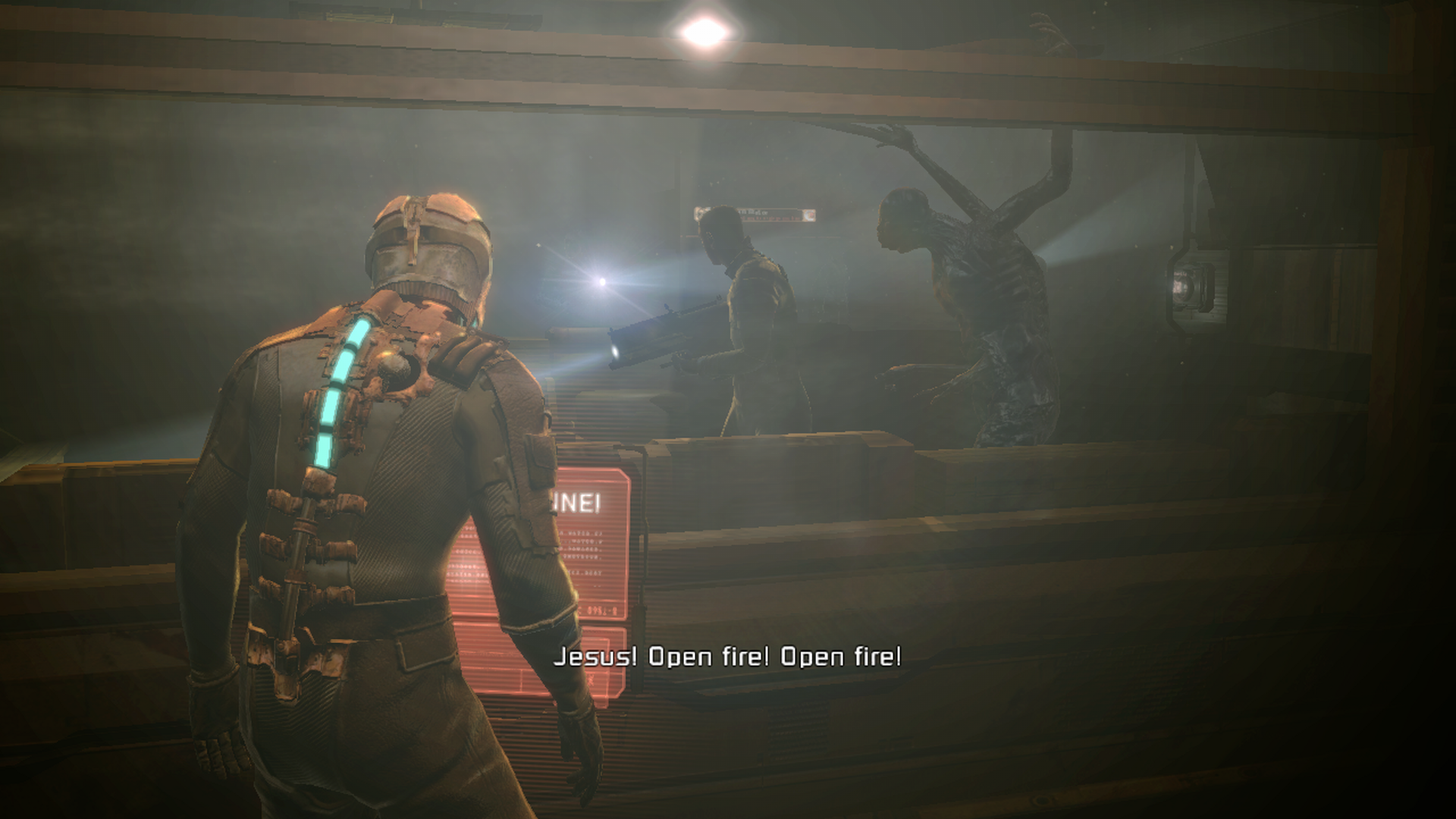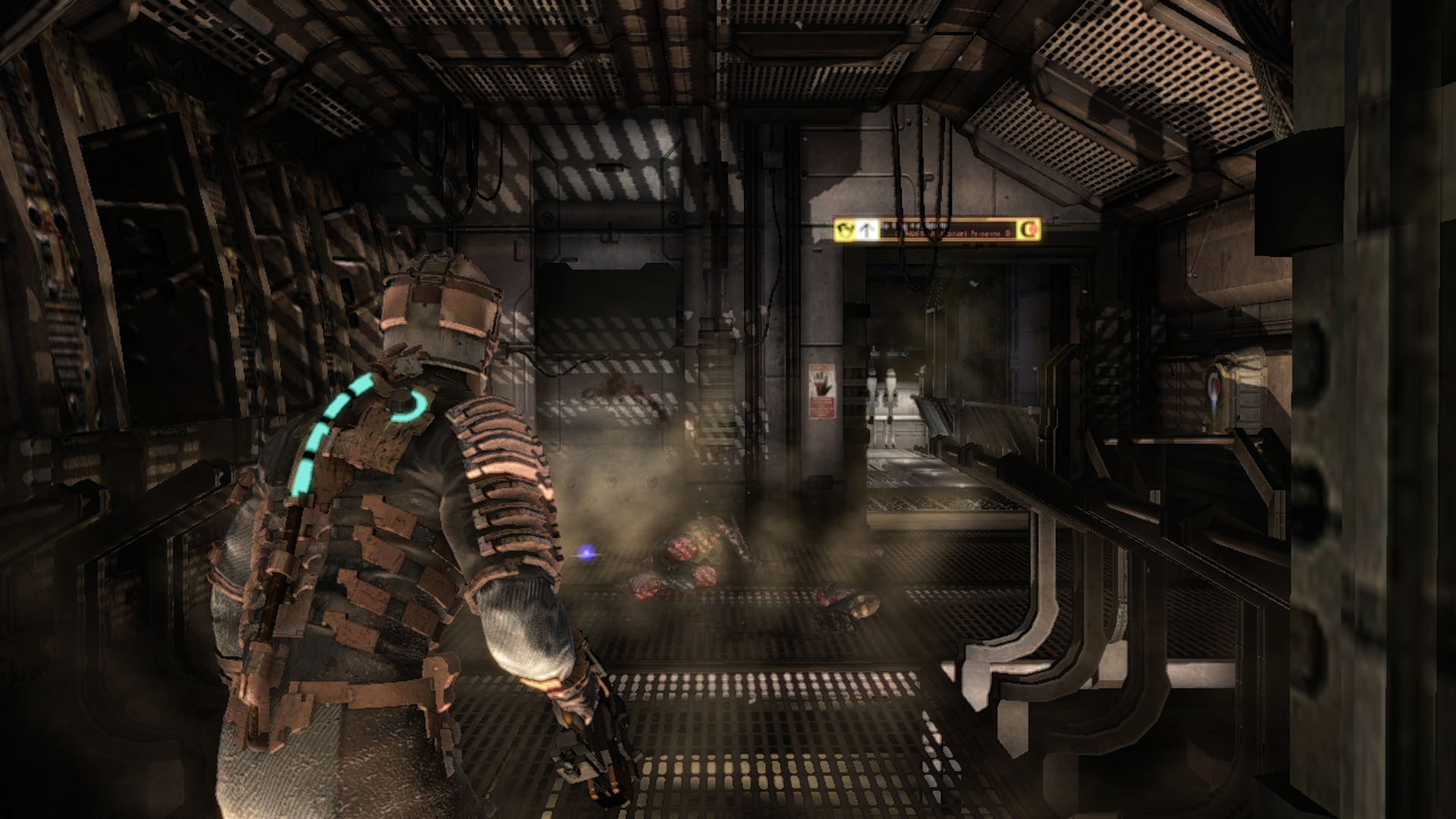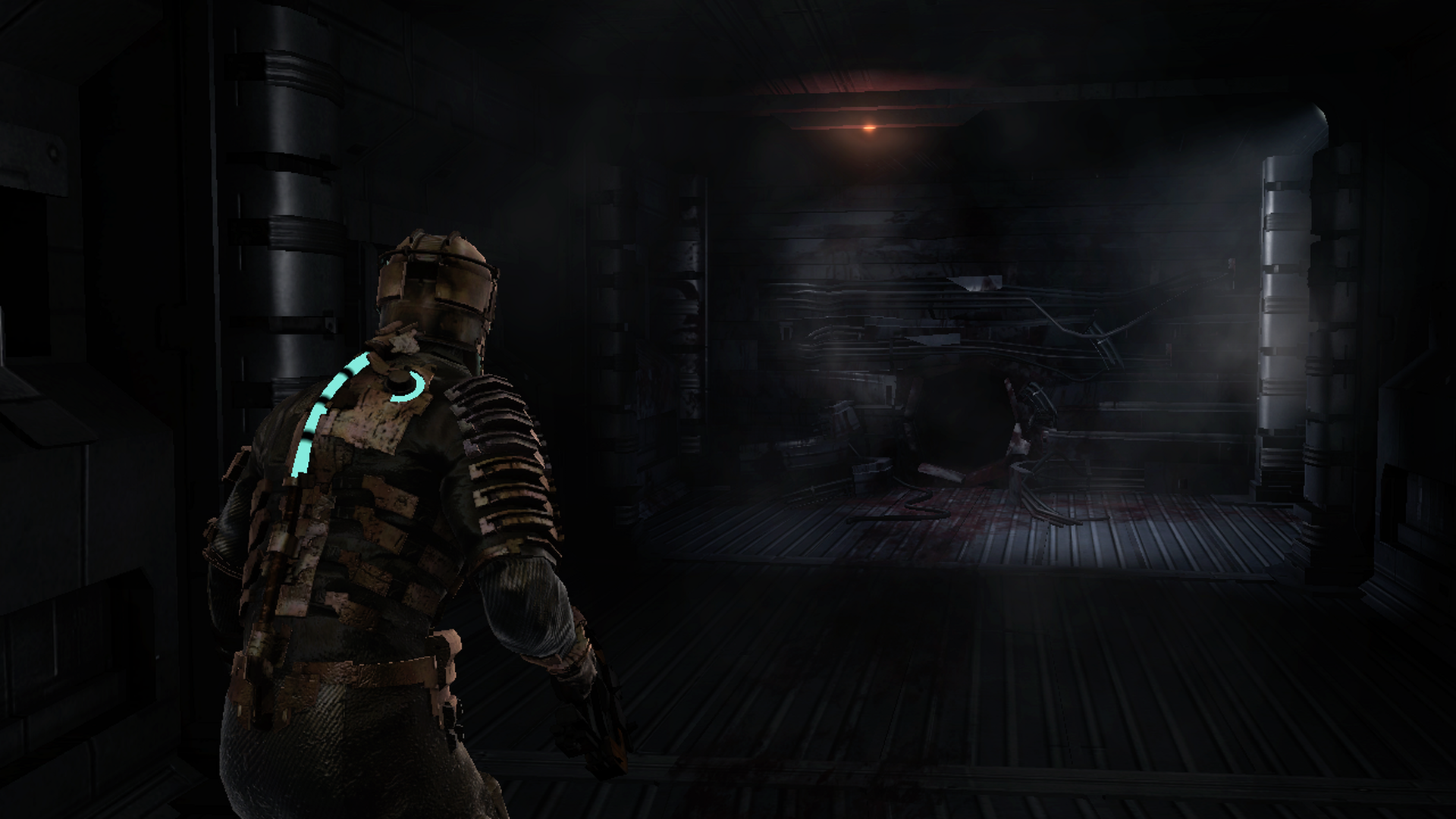Pumpkin Spice 2021 | The Best Haunted House in Games is a Space Ship
Haunted houses are weird for me. Theoretically, I should enjoy them. I love spooky places, and seeing how the people who built the haunted houses create an atmosphere through sound, light, and decorations is really fun. I love seeing the scare actors’ costumes, and their makeup always leaves me giddy - from a distance, anyway. When it comes to actually participating in a haunted house, though, I’m completely lost. When the actors interact with me, I never know how to respond. I know they’re just a person in a costume pretending to be someone else, and they know they’re just a person in a costume pretending to be someone else. How do they expect me to react? I’m not actually scared, because again, I know they’re just a person in a costume. Do they expect me to act scared? Can I convincingly pretend to be scared so that I don’t hurt their feelings? It’s just too many layers of social expectation for me to completely immerse myself in the experience of the haunted house.
Video games, however, present no such social expectations, so I can immerse myself in the spooky atmosphere of a digital haunted house with no reservations. My favourite is probably the Planet Cracker ship USG Ishimura from Dead Space, and I’m going to geek out about it here.
Welcome to the USG Ishimura. Please keep your arms and extra appendages inside the ride at all times.
“But that’s not haunted! There aren’t any ghosts in there,” I hear you shout. And you’re right. There are no ghosts in Dead Space, other than auditory and visual hallucinations. However, I say that a house need not contain a ghost in order to be a haunted house. In fact, most of the haunted house attractions I’ve been to focus less on ghosts and more on chainsaw murderers, monsters, zombies, ghouls, and other non-spectral horror staples. Because of this, the Ishimura can still qualify as a haunted house, and that’s to say nothing of the remnants of the horrors that occurred on this spacecraft, which we’ll get to in a little bit.
Even this game released in 2008 knew fracking sucked.
Dead Space takes place hundreds of years in the future, and in the game’s canon, humanity has used up all of Earth’s natural resources. Because of this, corporations began to take to the stars to strip other planets of their resources. The USG Ishimura was the oldest and most famous “Planet Cracker” ship, which literally split celestial bodies open in order to mine the resources inside. On its final run before being decommissioned, it cracked open the planet Aegis VII, which had been off-limits for years. Upon breaking into Aegis VII, an alien artifact called the Red Marker was discovered. Soon after, the crew began experiencing episodes of violent mania brought on by hallucinations caused by the Marker. These became worse after corpses began to be reanimated into deadly creatures, which were later dubbed “necromorphs.” The necromorphs stalk the ship, but they’re not alien invaders. They are the remnants of the former crew, twisted into horrifying parodies of themselves.
Hey, you guys! I appreciate y’all leaving dinner out for us but, er, you can come out now… Please…
While necromorphs are not traditional ghosts, this is a ship haunted by its former crew. The ship quickly descended into chaos, and nearly everyone aboard was wiped out, but not before someone managed to send a distress signal. You play as Isaac Clarke, one of the people assigned to discover why the signal was sent. What was supposed to be a routine repair mission becomes anything but.
Immediately, the Ishimura gives the player the sense that it is a place that was inhabited. Suitcases lie scattered about in the receiving area and lockers are haphazardly thrown open, but nobody is around. The set dressing is all perfectly constructed to convey to the player that people were living here but something has gone wrong.
“He’s behind you!”
”Oh, no he’s not!”
”Oh, yes he is!”
”Oh, no he—OH, FUC—”
I didn’t want to sleep tonight anyway…
Then, the lights go out. Something has tripped the automated quarantine procedures. An orange light strobes in the centre of the room, bathing everything in an eerie glow. A shadowy figure drops out of the ceiling, and Isaac is forced to watch as one of his crewmates is torn apart. Soon, Isaac is surrounded by monsters, and he’s forced to run through a hallway to a maintenance elevator where he gets his first good look at a necromorph when it pries open the doors with its sharp mutilated appendages.
It’s difficult to impress how mind-blowing Dead Space’s lighting was at the time. It still holds up today, which is wild in and of itself, but back in 2008 when the game first released, the lighting was unbelievable. In most places in the Ishimura, you can tell exactly where the light is coming from, and the shadows are used to great effect, too. When the light source moves, so do the shadows, and in some places light and shadow dance around the room, making sure that you as the player are never quite comfortable. When you see something moving in the corner of your eye, you’re not immediately sure if it’s an enemy or just a trick of the light.
Does it count as “going bump in the night” if you are in space?
Sound design is the other critical element of the Ishimura’s spooky appeal. The ambient soundscape in Dead Space is positively sublime. It is quite different to a traditional haunted house where silence menacingly fills the air only to be distrubed by occasional unaccounted for creeks of floorboards. The Ishimura is practically alive with death; metal clanks in the distance, monstrous roars echo through the air vents, and voices, both sweet and sinister, whisper in the player’s ears. Atmospheric noises like these make the Ishimura feel like a place teeming with un-life, where something could be around every corner. Whether something actually is around the corner is irrelevant; what’s important is that the player believes that something is there.
As well as the ethereal and ever present creep factor of Dead Space, it also features scripted jump scares and spooky moments, much like a real-life haunted house would have. Most of these are effective, and they are infrequent enough to not be tiresome. A creature punches through a window as you walk down a hallway. The lights turn off and you’re left in the dark, listening to the sounds of things moving in the walls around you. A mutilated man calls to you from a doorway, but when you reach the door, he has disappeared. I love scripted moments like these, at least on the first playthrough. It’s so fun to see the ways the developers manipulate the environment, and lead the player along, to scare them.
I am sure he just went to go pick something up… Right?
Dead Space has been in the news recently owing to the announcement of a remake developed by Motive Studios, and with a remake comes the opportunity for improvement. The biggest issue that I would like to see addressed is how enemies are spawned. For the most part, the number of enemies is fixed in the original game, and once you’ve cleared an area, the music quiets down and that area is almost always going to be safe again. Sure, the developers subvert this a few times by spawning enemies in previously-explored areas, but those moments are few and far between.
The Dead Space remake could learn from 2016’s Alien: Isolation. In Isolation, encounters with the xenomorph monster are largely not scripted, and can happen at almost any time. Because Dead Space is more focused on combat than Isolation, it would still need to set up scripted combat encounters, but adding dynamic encounters would go a long way in keeping later playthroughs dynamic and tense. Systems similar to this have been implemented in horror games dating back to Resident Evil 4 which featured a dynamic difficulty system that adjusted the amount of ammo that players found in containers, changed enemy aggression, and even adjusted the damage that enemies would deal to the player based on their performance in-game.
Eeeeeeh, don’t worry that part of the hull wasn’t that important anyway…
Another criticism of the first Dead Space was the implementation of zero-gravity sections. While I love the ambience of these sections (the sound effect that plays when you enter zero-g lives in my head rent-free), moving around them is a little clunky. You have to manually aim with your gun at where you want Isaac to go, then press a button to make him jump to that spot. This doesn’t feel great, and is quite cumbersome, especially when trying to fight off necromorphs. Developer Visceral Games solved this problem in the later Dead Space games by giving Isaac free movement in zero-g, allowing him to fly around with ease. However, I don’t know if simply adding the later games’ movement to the first game is the solution. The zero-g puzzles in the first game were designed with the restrictive movement system in mind, and adding free movement would completely break most of them. I’ll be interested to see how Motive Studios solves this problem. Will they leave the movement as-is? Will they add the free movement while also reimagining the puzzles to accommodate it? We’ll have to wait and see.
HAHAHAHAAHAHAHAHHA…. no.
While the lighting in Dead Space was incredible in 2008, and still holds up pretty well today, there’s definitely room for improvement. We’ve come a long way since 2008, and the addition of HDR in recent years has done a lot for spooky hallways. The 2019 remake of Resident Evil 2 is a great example of this, and I always hold that game up as having the best hallways that I DON’T want to go down. There is a blackness to the shadows that just screams, “THERE IS SOMETHING YOU CAN’T SEE LURKING HERE.” While the Xbox Series X’s “Auto-HDR” feature does a lot to older games like Dead Space, but it’ll still be exciting to see what the Ishimura looks like with modern lighting systems developed with HDR in mind considering the original’s game lighting is still so impressive, even by today’s standards.
I have barely scratched the surface of how much I love the design of the USG Ishimura and Dead Space more broadly, but to say any more would be to spoil a horror classic for players who haven’t experienced it yet. To me, the Ishuimura is the perfect haunted house. The sights are great, and the sounds are incredible. It’s fun just to put on a pair of headphones, turn off the lights, and take it all in. Most importantly, I don’t have to worry about interacting with anybody or think about what’s expected of me. I can just allow myself to be immersed in the spooky, scary (dead) space.
And remember folks…
















